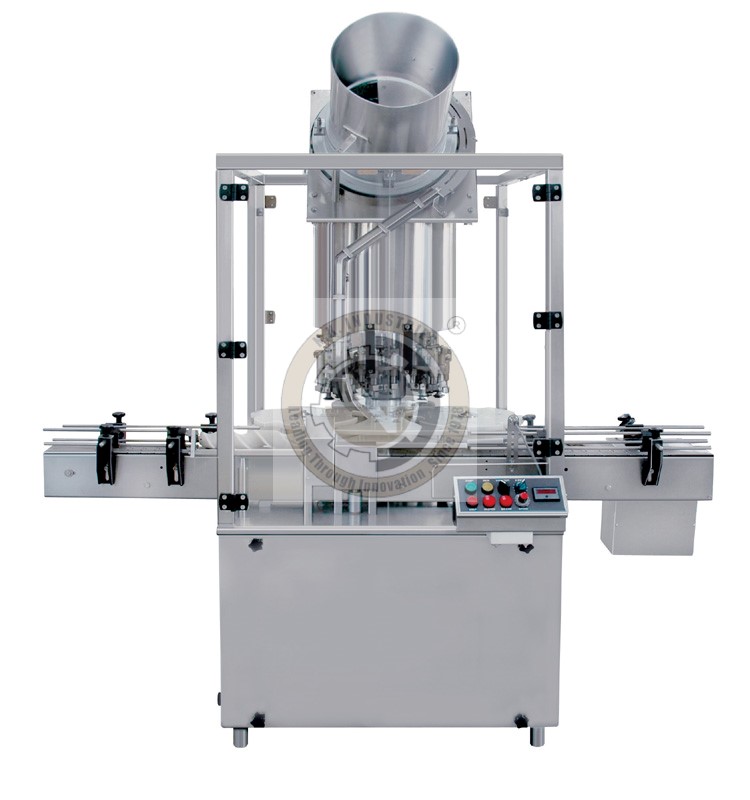Understanding ROPP Caps
Before exploring the applications and mechanics of ROPP capping machines, it is essential to understand what an ROPP cap is. ROPP stands for "Roll-On Pilfer Proof," and it refers to a type of bottle closure commonly used in industries like pharmaceuticals, distilleries, wine, and beverages. These caps are typically made from high-grade aluminum, a material chosen for its ductility, allowing it to form tightly around the bottle's neck.
While referred to as "pilfer-proof," in practice, no closure system is entirely tamper-proof. Instead, ROPP caps are tamper-evident, meaning any interference with the closure will be visible. Despite this, there have been instances where ROPP-sealed bottles, such as wine, have been compromised and refilled without any apparent evidence of tampering between the cap and the bottle.
How Is a ROPP Cap Applied?
ROPP caps begin as cylindrical, threadless closures. When applied to a bottle, the cap is pressed onto the bottle neck, where specialized rollers distort the aluminum to conform to the bottle's threads and the security ring near the neck. This ensures a tight seal while forming the necessary threads for secure closure.
The Machinery Behind ROPP Cap Application
The equipment used to apply these caps is known as an ROPP capping machine. These machines come in various configurations, catering to different production line requirements. From semi-automatic models to multi-head configurations, the right ROPP capping machine can be selected based on the production output needed.
How a Typical ROPP Capping Machine Works
A standard ROPP capping machine operates through several key components, each playing a crucial role in the capping process:
- Infeed conveyor
- Feed worm assembly
- Star wheel assembly
- Cap feeder unit
- Capping turret
Bottles are fed from the upstream machine onto the infeed conveyor belt, which transports them to the feed worm assembly. The worm assembly ensures proper spacing between the bottles before they are transferred to the star wheel for precise positioning.
Simultaneously, ROPP caps are automatically oriented in the cap feeder unit, such as a vibratory or orienter feeder, before being directed into the delivery chute. As bottles move beneath the sealing head, which typically consists of four rollers, two rollers perform the skirting, spinning, and sealing of the cap, while the other two form the threads based on the bottle neck's diameter.
After sealing, the capping head lifts, guided by a cam, allowing the bottle to move with the exit star wheel onto the conveyor belt for further processing.
Types of ROPP Capping Machines in the Market
The market offers a wide range of ROPP capping machines, from semi-automatic models to fully automated multi-head configurations. Each type is designed to meet varying production demands.
Economical ROPP Capping Machines
Economical, or semi-automatic ROPP capping machines are ideal for start-up businesses or operations with lower production requirements. Despite their simplicity, these machines provide high-quality ROPP sealing. The output rate is typically around 30 bottles per minute, though this depends largely on operator proficiency. The use of a motorized sealing head ensures consistent capping results.
Automatic Single-Head ROPP Capping Machines
The automatic single-head ROPP capping machine builds upon the semi-automatic version by introducing synchronized automation. Equipped with a single motor that coordinates the conveyor, star wheels, and turret, this machine can process up to 50 bottles per minute, depending on the container's diameter.
Multi-Head ROPP Capping Machines
For high-volume production, automatic multi-head rotary ROPP capping machines are available in various models, including 4-head, 6-head, 8-head, and 12-head configurations. These machines are selected based on the required production output, with speeds ranging from 100 to 300 containers per minute.
Why Choose N.K. Industries for Your ROPP Capping Machine Needs?
With over three decades of experience, N.K. Industries has established itself as a leading manufacturer of capping machines. Our product range includes ROPP capping machines, screw capping machines, lug capping machines, and vial capping machines. With more than 2,500 successful installations across India and abroad, we are committed to delivering top-quality, reliable capping solutions for a wide range of industries.


